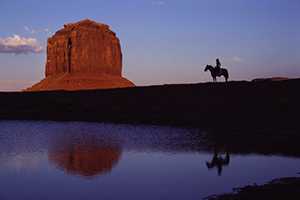Investigation of Drinking Water Exposures in Unregulated Water Sources in the Navajo Nation

Many households on Navajo Nation are not connected to a public water system and must transport or “haul” drinking water from outside water sources that are often unregulated and may contain dangerous chemical or bacterial contaminants.
The objectives of this study were to identify whether Navajo households haul drinking water from contaminated water sources, examine contaminant levels in humans, and define community health risks.
A cross-sectional survey was given to 5 randomly selected Navajo Nation communities in New Mexico regarding water use and hauling practices from selected participants. Water and urine samples were collected and analyzed for concentrations of uranium, arsenic, cadmium, and/or bacterial contaminants.
Participants had unusually high urine uranium levels, though only a few water samples exceeded the EPA standard for uranium. Uranium contamination of drinking water sources does not appear to be the primary cause of increased uranium levels found in urine. Bacterial contamination levels were significantly higher in hauled water samples indicating a public health risk.
Reference: Murphy, M, Barney Y, Begay M, Morgan P, Philbert K, et al. Investigation of Household Drinking Water Sources and Contaminant Exposures in the Navajo Nation, 2008-2009. Epidemiology. 2011; 22(1):S114.
- Page last reviewed: April 1, 2016
- Page last updated: April 1, 2016
- Content source:


 ShareCompartir
ShareCompartir